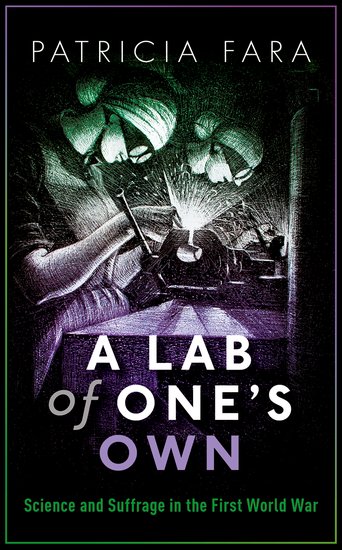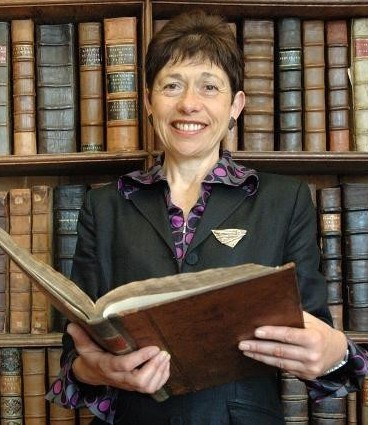So you want to be a world-famous scientist? Here are five tips based on success stories of the past but designed for ambitious young women of today…
In 1909, the Australian suffragist Muriel Matters hit headlines around the world when she flew over London in a dirigible, showering the crowds below her with thousands of campaign leaflets. Although British women were still not able to vote, they could and did fight for their country during the First World War. Getting a degree was even harder then than now, but these pioneers were determined to succeed. When the men went overseas, female scientists moved up to take over their positions. They wanted better opportunities not only for themselves, but also for the women who would follow them 100 years later.
Tip One: Do what you want to do, not what your parents or teachers think you should do
Helen Gwynne-Vaughan was born into a dream life: her family was rich, travelled throughout the world and bought her all the beautiful clothes she asked for. But her heart was set on something different: she wanted a career as a scientist. After many family fights, when she was 21 she at last persuaded her parents to let her study biology, and she never looked back. She came top in all the exams, got a position as a lecturer, and became head of department at Birkbeck College in London.
Tip Two: Somebody has to be first – and it could be you!
Hertha Ayrton was one of the earliest female mathematics students in Britain, and she won prizes for finding a way to make sure that electric street lights shone steadily without spluttering. Speaking to a journalist at the beginning of the last century, she formulated a mission statement for female scientists: ‘I do not agree with sex being brought into science at all. The idea of “woman and science” is completely irrelevant. Either a woman is a good scientist, or she is not.’ Ignoring setbacks, she became the first female member of the Institution of Electrical Engineers, and the first woman to be allowed inside London’s Royal Society and present her own research.
Tip Three: If you want the top job, have the confidence to apply for it
In 1892, chemist Emily Lloyd worked out how to get the position she wanted. The Royal Institute of Chemistry allowed women to write papers for their journal, but did not permit them to become members. She just knew that she was good enough to belong – and she also realised that the only way to succeed was to apply. So she entered herself for the examinations and when she passed with flying colours, the Institute was forced to admit her. Only later did they discover the true identity of the candidate who signed herself E Lloyd.
Tip Four: Embrace adventure and ignore convention
Edith Stoney taught physics in London, but during the First World War she volunteered to join an all-female medical unit travelling to Serbia. She found herself wiring up generating systems in sub-zero temperatures, putting up tents in tropical heat waves, and operating X-ray machines behind enemy lines. Like the doctors she travelled with, she welcomed this opportunity to act independently and makes decisions on her own initiative. Caring little for her appearance, she was dressed in ‘rubber overall, thick rubber gauntlet gloves…her whole mind centred on her work’ – and she was rewarded with multiple military distinctions.
Tip Five: Be prepared to go in new directions
You have to choose for yourself what you want to do with your life, but there is nothing wrong in changing your mind and switching to something you think is more worthwhile. As a small girl, Ray Strachey loved maths, and was thrilled when she won one of the few places for women at Cambridge University. But when she should have been studying, she spent much of her time organising suffrage demonstrations to win the vote. She decided that getting equality for women was the most important contribution she could make to society. Regretfully turning her back on maths, she dedicated her life to making sure that future generations of women would enjoy the same privileges as men.
And the most important Tip of all: If you feel something is wrong, change it!
Change is scary: it’s so much easier to let everything continue the same way as before. A hundred years ago, many people wanted to go on excluding women from science. But a few pioneers were brave enough to challenge the system – and their success made it easier for others to follow.
Ignoring her parents’ objections and the mockery of her friends, Victoria Drummond insisted on training as an engineer. Even in the Second World War, she was still Britain’s only female marine engineer, but by winning an MBE for her prompt action on a bombed ship, she convinced the Navy that women were valuable on board.
As well as such individual initiatives, women also took collective action. When the War Office told the Scottish surgeon Elsie Inglis that only men could work at the Front, she appealed to suffrage societies all over the country, who rapidly raised enough money to send voluntary medical organisations to France and Serbia. Their performance was so impressive that the Army changed its mind and began to welcome female doctors.
There are now far, far more women in the top levels of science than ever before, but there’s still room for improvement. By refusing to accept the status quo, you can get that top job for yourself and also make it easier for other women to join you.

Many extraordinary female scientists, doctors, and engineers tasted independence and responsibility for the first time during the First World War. How did this happen? Patricia Fara reveals how suffragists, such as Virginia Woolf’s sister, Ray Strachey, had already aligned themselves with scientific and technological progress, and that during the dark years of war they mobilized women to enter conventionally male domains such as science and medicine. Fara tells the stories of women such as: mental health pioneer Isabel Emslie, chemist Martha Whiteley, a co-inventor of tear gas, and botanist Helen Gwynne Vaughan. Women were now carrying out vital research in many aspects of science, but could it last? Though suffragist Millicent Fawcett declared triumphantly that ‘the war revolutionised the industrial position of women. It found them serfs, and left them free’, the outcome was very different. Although women had helped the country to victory and won the vote for those over thirty, they had lost the battle for equality. Men returning from the Front reclaimed their jobs, and conventional hierarchies were re-established even though the nation now knew that women were fully capable of performing work traditionally reserved for men. Fara examines how the bravery of these pioneer women scientists, temporarily allowed into a closed world before the door clanged shut again, paved the way for today’s women scientists. Yet, inherited prejudices continue to limit women’s scientific opportunities.
About the Author:

One thought on “Advice for today from yesterday’s leaders”